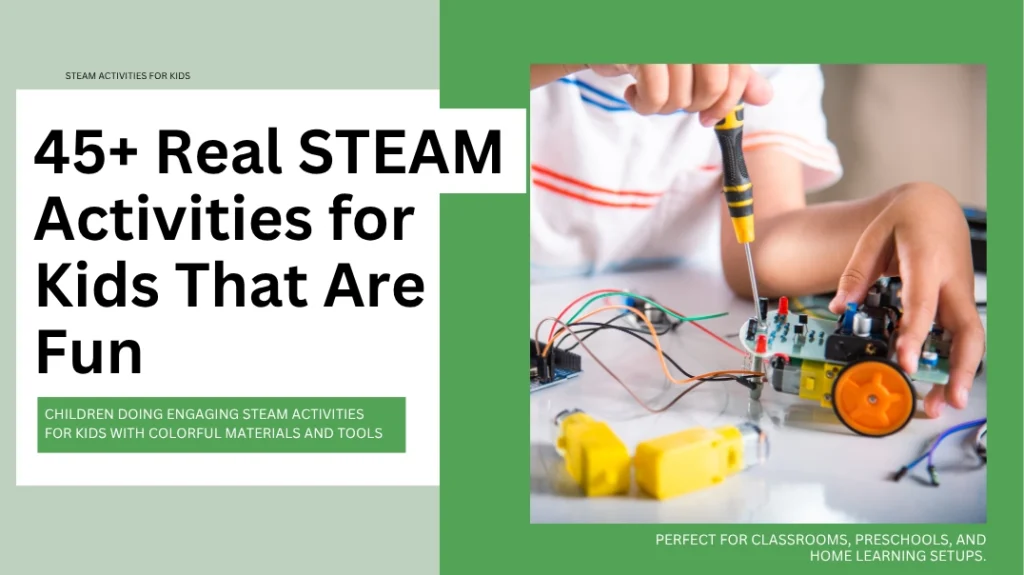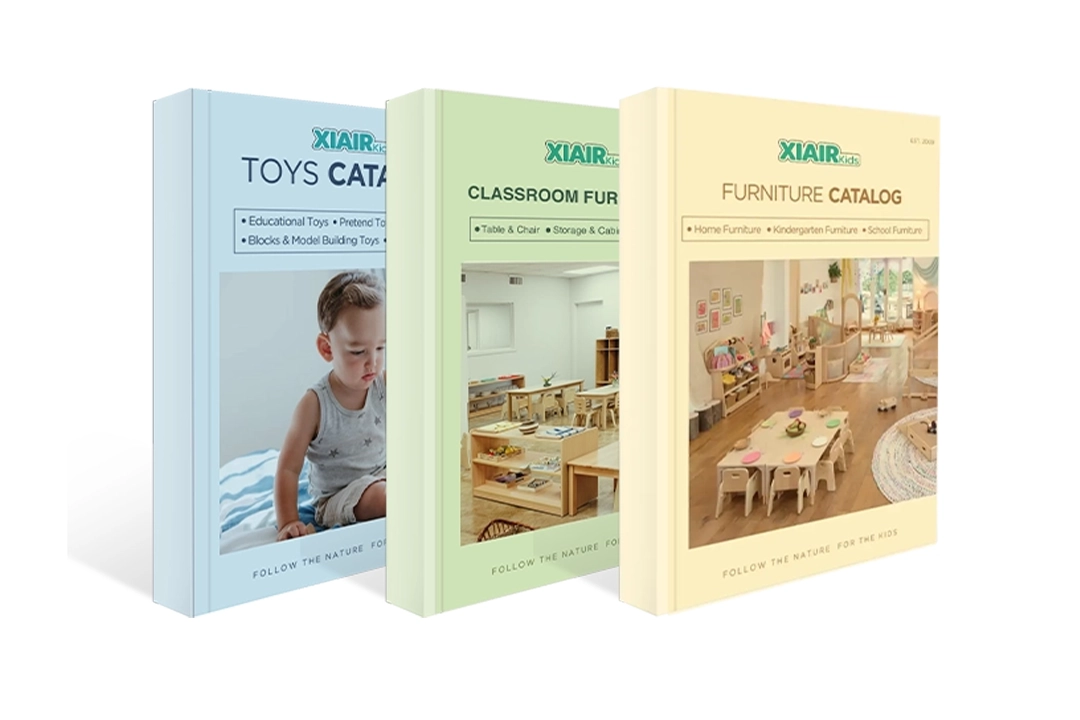STEAM activities for kids are hands-on projects that combine science, technology, engineering, art, and math. These activities help children explore ideas, ask questions, build things, and solve real problems—all through play. Instead of learning only from books or screens, kids learn by doing, creating, and thinking.
Many teachers and parents have noticed that traditional lessons sometimes aren’t enough to keep young learners excited. Children need more than just facts—they need the chance to explore with their hands, use their imagination, and connect what they learn to the real world. That’s where STEAM activities shine. They allow children to design, test, and create, which builds not only knowledge, but confidence too.
If you’re wondering how STEAM differs from STEM, or you’re looking for a big list of STEM activities to try first, we’ve got you covered. Check out our full guide to STEM vs STEAM and our collection of 60+ STEM activities for kids to learn more.
In this article, we focus on practical, ready-to-use STEAM activities for kids. These ideas are suitable for different age groups—from preschoolers to elementary kids—and can be used in classrooms, learning corners, or outdoor play areas. You’ll find creative, science-based, math-focused, and art-inspired activities that are easy to set up and meaningful for children. Every activity includes clear materials, simple instructions, and age suggestions, so you can start right away.
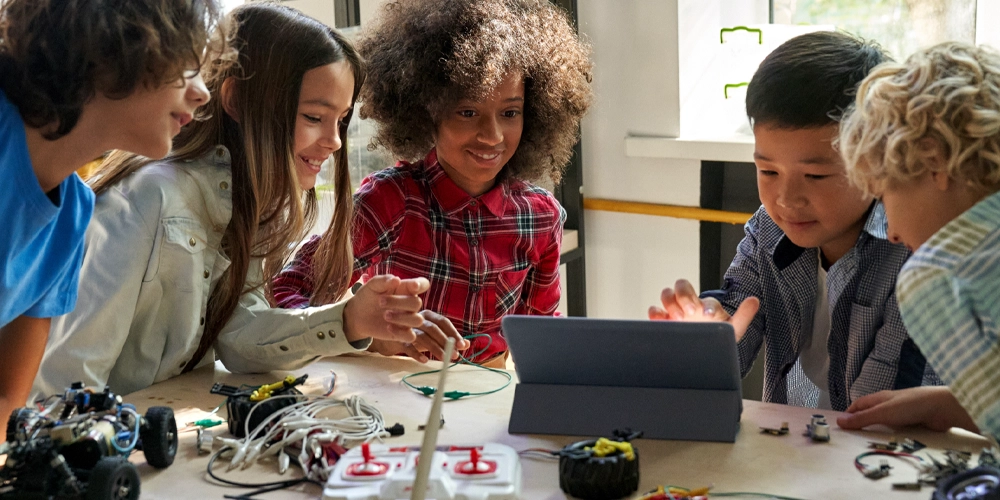
STEAM Activities for Preschoolers
For preschoolers, STEAM learning should feel like play. The STEAM activities for kids listed below are designed to help young children explore, move, build, and ask questions—all in ways that feel natural and fun. These projects don’t need fancy tools, just simple materials and a little imagination. Perfect for classrooms, learning corners, or home play setups, these early STEAM activities for kids also support essential developmental skills.
Paper Tube Tower Design
Recommended Age: 3–6 years
Give kids a bunch of paper tubes, and you’ll see them start building right away. Some will stack them high, others will make wide bases. When the tower falls, they try again—figuring out how to make it stronger. This simple activity builds problem-solving skills and early engineering thinking, all through hands-on fun. This is one of the simplest STEAM activities for kids that introduces problem-solving in a playful way.
Необходими материали:
- Paper towel or toilet paper tubes
- Лента или лепило
- Flat cardboard base
- Optional: crayons or stickers for decoration
Ramp & Toy Car Slide Experiment
Recommended Age: 4–6 years
Set up a basic ramp and let kids race toy cars down. Then change the angle or surface—add books, try carpet vs. tile—and see how the car’s speed changes. They’ll naturally start asking, “What happens if…?” This is a great way to help them learn about motion, speed, and surfaces while having a blast. Activities like this are great entry points when introducing STEAM activities for kids that explore physical science concepts.
Необходими материали:
- Toy cars
- Cardboard or wooden planks
- Blocks or books
- Ruler or tape measure
Coffee Filter Color-Mix Art
Recommended Age: 3–5 years
Kids use markers to draw on coffee filters, then drip or spray water on top. The colors spread and mix in amazing ways—some make rainbows, others create soft watercolor effects. It’s fun, creative, and gives them a chance to see how colors move and blend. This quiet, hands-on experiment is a perfect addition to any list of STEAM activities for kids focused on science observation.
Необходими материали:
- White coffee filters
- Washable markers
- Spray bottle or pipette
- Tray or paper towels
Colored Liquid Density Bottles
Recommended Age: 4–6 years
Help children pour different liquids like oil, colored water, and dish soap into a clear bottle. They’ll notice the liquids stay in layers and don’t mix. Drop in small objects and guess which ones will sink or float. It’s a calm, eye-opening activity that introduces how materials are different—even if they all look like “liquid.”
Необходими материали:
- Clear bottles or jars
- Oil, colored water, dish soap
- Small beads, buttons, or paperclips
- Funnel (optional)
Bubble Science: Creation & Observation
Recommended Age: 3–5 years
Make bubble solution and let the kids blow bubbles with wands or straws. They’ll chase, catch, and even try to make huge ones. Ask questions like “Why do they pop?” or “Can we make a square bubble?” Great for outdoor play and exploring air, shapes, and surface tension (without calling it that!).
Необходими материали:
- Dish soap + water + sugar or glycerin
- Bubble wands or straws
- Tray or shallow dish
Magnet Fish & Rice Tray Discovery
Recommended Age: 3–6 years
Fill a tray with dry rice and hide small metal and plastic objects inside. Give kids a magnet wand and let them go “fishing.” They love discovering what sticks and what doesn’t, and they’ll start sorting, testing, and comparing without even realizing they’re doing science.
Необходими материали:
- Dry rice
- Magnetic and non-magnetic items
- Magnet wand
- Small bowls
Shape Walk & Sidewalk Chalk Game
Recommended Age: 3–6 years
Draw big shapes on the ground with chalk—circles, squares, triangles. Then call out, “Jump to the triangle!” or “Walk the blue line!” Kids move, follow directions, and name shapes as they go. It’s a mix of math and movement that works perfectly outside or in a large room. Movement-based STEAM activities for kids like this one help connect math with play and physical learning.
Необходими материали:
- Тротоарна тебешир
- Safe play space
- Optional: flashcards with shapes
Static Electricity Balloon Experiment
Recommended Age: 4–6 years
Kids rub balloons on their hair or a sweater, then hold the balloon near paper bits or the wall. They giggle as the paper jumps or the balloon sticks. Let them try different surfaces or materials. It’s quick, silly, and a fun way to show them invisible forces at work.
Необходими материали:
- Balloons
- Tissue paper or confetti
- Fabric (like a sweater)
Lemon Volcano Reaction
Recommended Age: 4–6 years
Cut a lemon in half, squeeze it a bit, and add baking soda on top. The juice fizzes and foams like a tiny volcano! Kids are amazed—and they’ll ask to do it again. It’s one of the easiest ways to introduce simple chemical reactions to kids. It’s one of the most exciting and low-prep STEAM activities for kids, perfect for sparking curiosity in early science.
Необходими материали:
- Lemons
- Baking soda
- Food coloring (optional)
- Tray
Magnet Painting Activity
Recommended Age: 3–5 years
Put paper inside a tray, add drops of paint, then place a metal ball on top. Under the tray, kids move a magnet to drag the ball around and mix colors. It’s a mix of science and art that’s fun to watch and exciting to do. Every painting is different, and every child feels proud of their result.
Необходими материали:
- Tray or box
- Хартия
- Миеща се боя
- Metal ball
- Magnet wand
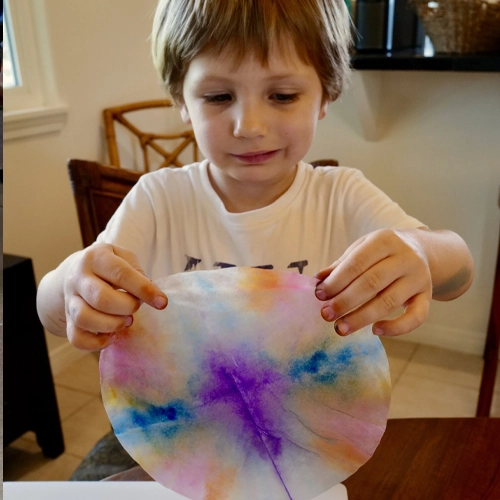
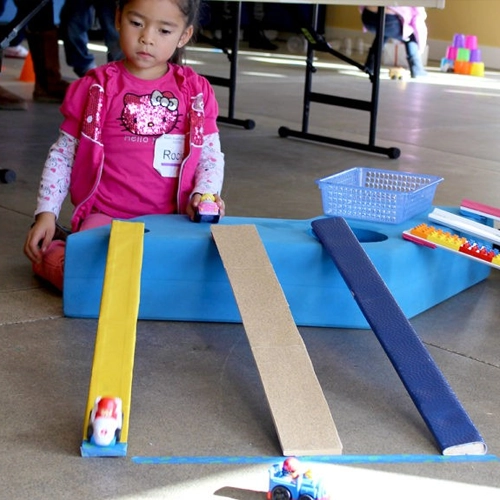
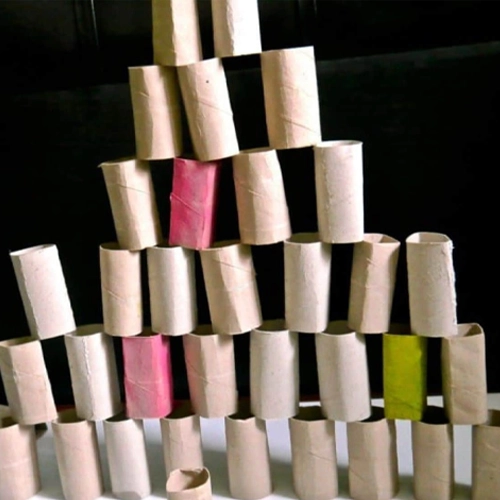
STEAM Activities for Elementary Kids
These STEAM activities for kids in elementary school are designed to build critical thinking, creativity, and hands-on problem-solving. Each activity uses easy-to-find materials and supports classroom learning across science, technology, engineering, arts, and math. Ideal for group projects, enrichment sessions, or maker corners, these practical STEAM activities for kids help young learners connect what they do with what they learn.
Solar Oven Marshmallow Bake
Recommended Age: 6–9 years
Children build a simple solar oven using a pizza box lined with foil and covered in plastic wrap. The interior is painted black or lined with dark paper to absorb heat. After placing marshmallows or chocolate inside, the box is positioned in direct sunlight. Over time, the contents soften or melt, showing how the sun’s energy can be captured and used. This activity introduces solar energy, heat absorption, and basic engineering design in a hands-on way. It’s one of the most engaging STEAM activities for kids when exploring renewable energy.
Необходими материали:
- Pizza box
- Aluminum foil
- Plastic wrap
- Tape, black paper, scissors
- Marshmallows or chocolate
Marble Roller Coaster Challenge
Recommended Age: 7–10 years
This activity challenges children to build a working marble roller coaster using simple materials. The goal is to create a track that allows a marble to move smoothly from start to finish using only gravity. Children begin by planning their layout using foam tubes or cardboard strips, taping them to surfaces to build inclines, curves, or loops. As they test their tracks, they adjust angles and supports to improve stability and speed. The activity encourages experimentation, fine motor control, and early understanding of motion and energy.
Необходими материали:
- Foam pipe insulation or cardboard strips
- Marbles
- Лента
- Books or boxes for elevation
Water-Wheel from Bottle Caps
Recommended Age: 6–8 години
Children design and build a simple water wheel using recycled bottle caps attached to a central stick or skewer. The wheel is placed over a bowl or container, and water is poured over it to make it spin. Variations in cap size, spacing, and water flow can be explored to change rotation speed. This activity helps children understand mechanical energy, water flow, and basic engineering principles using recycled materials.
Необходими материали:
- Bottle caps
- Wooden skewers or rods
- Strong glue or tape
- Plastic bowl or container
- Water pitcher
Bridge from Recyclables
Recommended Age: 7–10 years
Students are asked to design and build a bridge using only recycled materials that can support weight. Working individually or in teams, they test different shapes, supports, and materials. The goal is to build the strongest structure using the least material. This activity promotes structural design, load testing, and sustainable thinking. Teachers can increase difficulty by setting height or length limits, or using point systems for different materials.
Необходими материали:
- Recyclable materials (cardboard, bottles, paper tubes)
- Tape, glue, scissors
- Weights (coins, small books, toy cars)
Egg Drop Design Challenge
Recommended Age: 8–10 години
In this classic engineering task, students create protective containers that prevent a raw egg from breaking when dropped from a set height. Using materials like straws, paper, and cotton balls, they test designs and make improvements after each drop. This activity encourages design thinking, analysis of forces, and hands-on experimentation. It can also be used to introduce discussions about impact, gravity, and problem-solving under constraints.
Необходими материали:
- Raw eggs
- Paper, straws, tape, cotton balls
- Ножици
- Drop zone (step ladder, balcony)
Wind-Powered Pinwheel Generator
Recommended Age: 7–10 years
Students create pinwheels using paper or plastic and mount them on pencils or sticks. They test how wind (from a fan or outdoors) turns the blades. For an advanced option, they can attach a simple motor and light bulb to see if the wind can generate electricity. The activity demonstrates wind as a renewable energy source and introduces the idea of converting motion into electrical energy. Among STEAM activities for kids, this one introduces the concept of wind energy in a way they can see and touch.
Необходими материали:
- Paper or plastic sheets
- Pencils, sticks, or skewers
- Tape, scissors
- Fan or open space with wind
- Optional: small motor, LED light
Sound Waves with Salt & Ruler
Recommended Age: 6–9 years
Students stretch a ruler between two books and sprinkle salt or rice on it. When the ruler is tapped or vibrated, the particles jump or shift. They observe how different tap strengths or ruler materials affect the result. This hands-on experiment gives a visual representation of sound waves and vibrations. It helps children understand that sound is caused by movement and travels through materials.
Необходими материали:
- Plastic or wooden ruler
- Salt, sugar, or rice
- Two books or blocks
- Spoon or tapping stick
DIY Weather Station & Charting
Recommended Age: 7–10 years
Children build simple tools like rain gauges, thermometers, and wind vanes using basic craft materials. Over several days or weeks, they record weather changes using charts or journals. This activity connects science observation with data tracking and measurement. It also builds awareness of patterns in nature and basic environmental science.
Необходими материали:
- Plastic cups, bottles, straws
- Paper, tape, markers
- Ruler or thermometer
- Graph or data sheet
Clay Animation with Stop Motion
Recommended Age: 8–10 години
Students create short animations by shaping clay figures and moving them slightly between each photo frame. They use a tablet or phone and a free app to take photos and play them back as a video. This activity introduces basic digital technology, storytelling, and sequencing. It also improves fine motor skills and planning, as students must think ahead to create movement. planning, as students must think ahead to create movement. Creative STEAM activities for kids like this help merge digital literacy with artistic expression.
Необходими материали:
- Modeling clay
- Cardboard or flat surface
- Smartphone or tablet
- Stop-motion animation app
Tech Bracelet with Microcontroller
Recommended Age: 9–10 years
Children use a beginner-friendly microcontroller (like a micro:bit) to build a wearable bracelet that lights up or reacts to motion. They write simple code using a block-based editor and upload it to the device. This activity introduces coding, wearable technology, and how sensors respond to inputs. It’s ideal for beginners interested in tech or creative STEM projects.
Необходими материали:
- micro:bit or similar device
- Battery pack
- USB cable
- Conductive thread or clips
- Computer or tablet
Robot Maze Navigation
Recommended Age: 8–10 години
Students program a robot (like Bee-Bot, Dash, or Ozobot) to move through a maze on the floor. They plan commands ahead of time, test them, and correct mistakes. Teachers can adjust maze difficulty or add timed challenges. This activity teaches sequencing, basic programming, and spatial awareness. It also supports logical thinking and teamwork. This is one of the most exciting STEAM activities for kids who love robotics and puzzles.
Необходими материали:
- Programmable robot
- Maze made from tape or printed grid
- Tablet or controller (if needed)
- Challenge cards (optional)
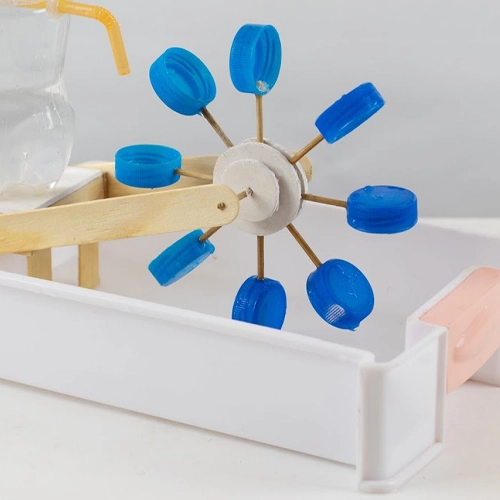
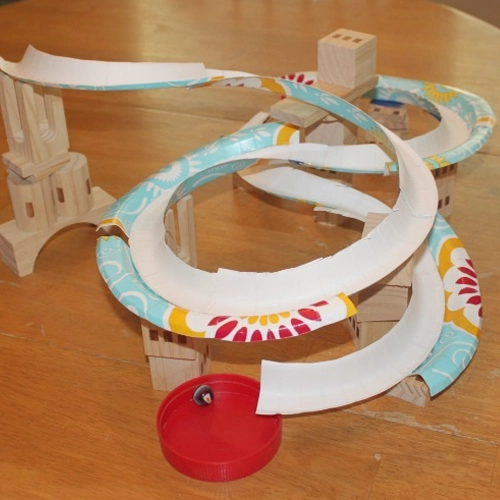
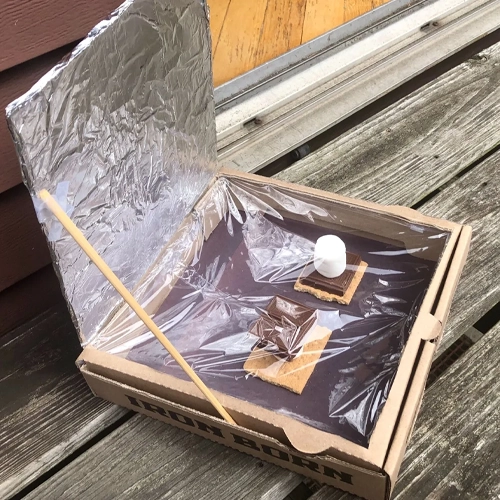
STEAM Art Activities for Kids
Art activities within STEAM education help kids express ideas visually while exploring scientific and mathematical concepts in creative ways. These STEAM activities for kids are designed to blend colors, light, patterns, and materials—encouraging observation, experimentation, and hands-on learning. Whether you’re a teacher, homeschool parent, or enrichment coordinator, these STEAM activities for kids are easy to organize in a classroom or activity room with minimal prep.
Light & Shadow Art Installation
Recommended Age: 6–9 years
This activity encourages kids to create visual scenes using blocks, toys, or shapes and project their shadows onto a flat surface using a flashlight or lamp. Once the shadows appear, they trace them on paper and color or decorate the outlines. Children experiment with distance, angle, and object shape to see how shadows change. This teaches them how light travels, how shadows form, and introduces basic spatial reasoning in a creative way.
Необходими материали:
- Small toys, blocks, or paper cutouts
- Flashlight or desk lamp
- Large sheet of paper or white surface
- Crayons, markers, or colored pencils
Sun Print Photography
Recommended Age: 7–10 years
Children use sun-sensitive paper and place flat objects such as leaves or stencils on top. After exposing the paper to sunlight for a few minutes, the paper is rinsed and reveals a print of the object. This STEAM activity for kids shows how ultraviolet light affects materials, and connects art with simple science. Kids enjoy experimenting with different shapes and light times to create their own nature-inspired art. Among many STEAM activities for kids, this one stands out for connecting art and UV light in a visually stunning way.
Необходими материали:
- UV-sensitive sun print paper
- Leaves, flowers, keys, or stencils
- Tray with clean water
- Timer or clock
- Flat workspace with sunlight access
Colour-Spin Light Experiment
Recommended Age: 6–8 години
In this activity, kids draw segments of different colors on a paper circle. When the circle is attached to a pencil and spun quickly, the colors visually blend. Some colors disappear or change when spun. This project helps children explore color theory and perception while practicing fine motor skills and observation. It’s one of the most engaging and easy STEAM activities for preschoolers and young kids to introduce how our eyes react to motion and color.
Необходими материали:
- Cardstock or thick paper
- Colored markers or crayons
- Pencil or spinning base
- Ножици
- Лепило
Fraction Mosaic Art
Recommended Age: 7–10 years
Students create mosaic patterns using colored paper tiles and are asked to follow a rule—for example, “half the tiles must be blue,” or “one quarter should be yellow.” They then calculate and place their pieces accordingly. This hands-on math-based art activity helps kids visualize fractions while exploring symmetry, pattern, and design. It is a great way to combine early math skills with creative expression. This is also a great choice when looking for STEAM activities for kids that reinforce math in an artistic format.
Необходими материали:
- Colored paper squares or pre-cut shapes
- Ruler and pencil
- Лепило на пръчка
- Worksheet or instruction card
Stained-Glass Effect with Candy & Paper
Recommended Age: 6–9 years
Children use tissue paper or crushed hard candy between layers of wax paper or transparent sheets to mimic the look of stained glass. When held up to the light, their colorful designs glow. This activity connects visual design with concepts of light transparency and color layering. It’s a highly visual and sensory-rich STEAM art activity that kids enjoy and can proudly display. These types of sensory-rich STEAM activities for kids are perfect for visual learners and inclusive classroom projects.
Необходими материали:
- Tissue paper or Jolly Rancher-type candy
- Wax paper or plastic film
- Glue or iron (if melting candy with adult help)
- Ножици
- Frame or cardboard border (optional)
Prism & Paint Light Exploration
Recommended Age: 7–10 years
Children explore how prisms bend and split light into different colors. After observing rainbows or reflections using mirrors and glass objects, they use paint or colored pencils to recreate what they saw. This activity helps children observe light behavior in a creative context. It’s an ideal steam activity for elementary kids that blends science observation with visual art skills. It’s one of the best STEAM activities for kids in elementary school that blends science observation with visual art skills.
Необходими материали:
- Prism or clear glass object
- Mirror
- Flashlight
- Бяла книга
- Paint or color pencils
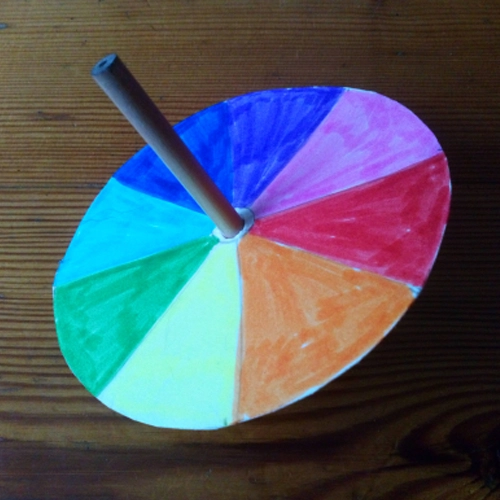
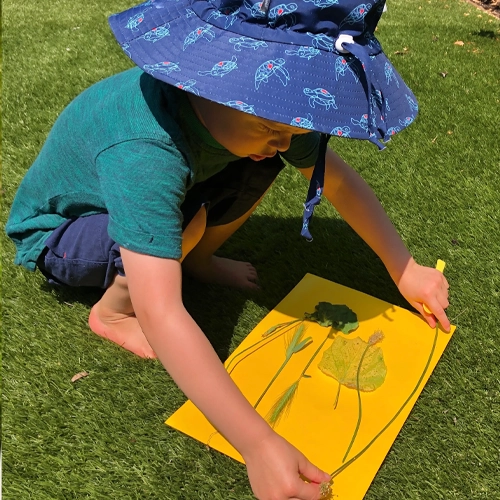
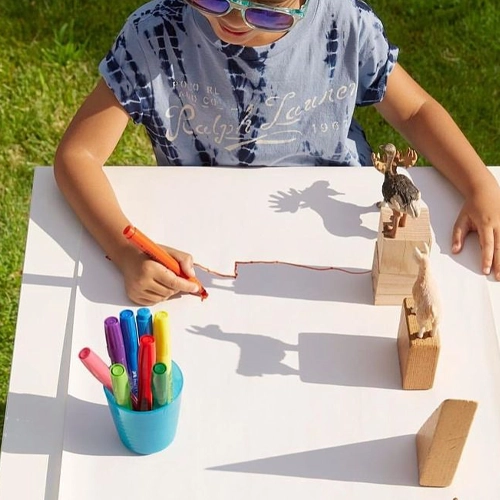
STEAM Math Activities for Kids
Math within STEAM learning isn’t limited to numbers on paper. These STEAM activities for kids turn math into something hands-on, visual, and fun. From measuring time to working with patterns, children build number sense through real-world experiences. Perfect for classrooms or enrichment time, especially when introducing steam math activities for preschoolers or early elementary students.
Seed Growth Data Log in Bottles
Recommended Age: 6–9 years
In this activity, students plant seeds in transparent bottles and measure growth over days or weeks. They create daily or weekly logs, draw changes, and use rulers to track height. Children then graph the data to compare which plant grew fastest or which bottle had the best conditions. This activity combines life science with math and data recording in a real-world setting.
Необходими материали:
- Clear plastic bottles
- Seeds (bean, grass, etc.)
- Soil and water
- Ruler
- Chart or graph paper
Pattern Recognition Math Art with Blocks
Recommended Age: 5–8 years
Children use colorful building blocks or pattern tiles to create repeating or alternating designs. You can give them specific pattern prompts (A-B-A-B, A-A-B-B) or let them create freely, then describe the pattern mathematically. This is one of the easiest STEAM activities for preschoolers to introduce basic algebraic thinking through play.
Необходими материали:
- Colored blocks or pattern tiles
- Baseboard or tabletop
- Worksheet or pattern guide (optional)
- Молив
Paper Rocket Flight Time Experiment
Recommended Age: 7–10 years
Students design simple paper rockets, launch them using straws or rubber bands, and use stopwatches to time each flight. After multiple tries, they average the flight times and create a chart comparing their results. This activity connects measurement, data analysis, and physics—all under the umbrella of engaging STEAM activities for kids.
Необходими материали:
- Paper or cardstock
- Tape, straws, scissors
- Stopwatch or timer
- Graph/chart sheet
Graphing Ice Melt Speeds
Recommended Age: 6–9 years
Children observe how fast ice melts under different conditions—sunlight, room temperature, or warm water. They record the time at set intervals and plot the data into a bar or line graph. This experiment helps kids understand time, temperature, and visual data representation while observing real changes. It’s one of the most relatable steam activities for elementary kids.
Необходими материали:
- Ice cubes
- Cups or trays
- Thermometer (optional)
- Timer
- Graphing paper
DIY App Stopwatch Experiment
Recommended Age: 8–10 години
Using a free stopwatch app, students practice timing different tasks like how long it takes to stack 10 cups or run across a space. They compare results, find averages, and create a class chart. This activity improves number literacy, estimation, and time awareness, making math feel active and practical. It’s also a simple way to introduce basic data handling.
Необходими материали:
- Stopwatch app (phone or tablet)
- Paper and pencil
- Pre-set tasks (stack cups, jumping jacks, etc.)
- Ruler or tape for distance (optional)
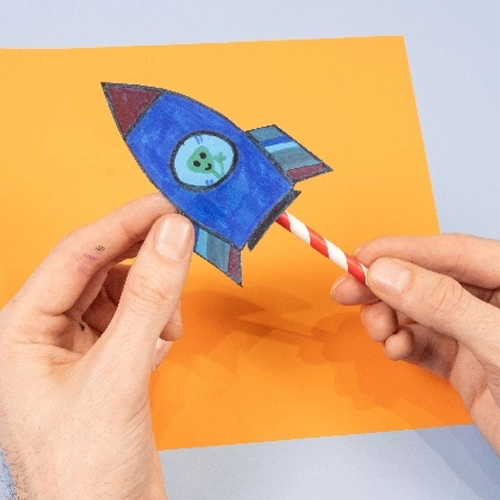
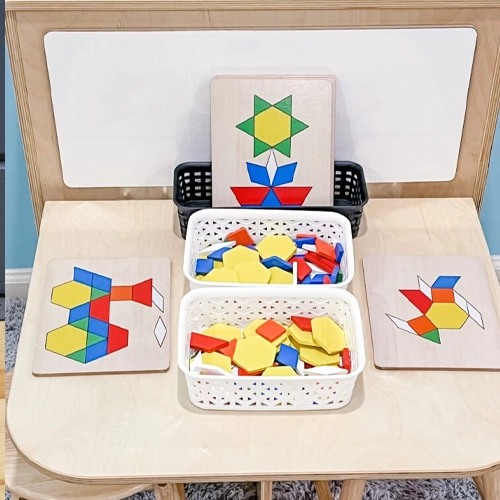
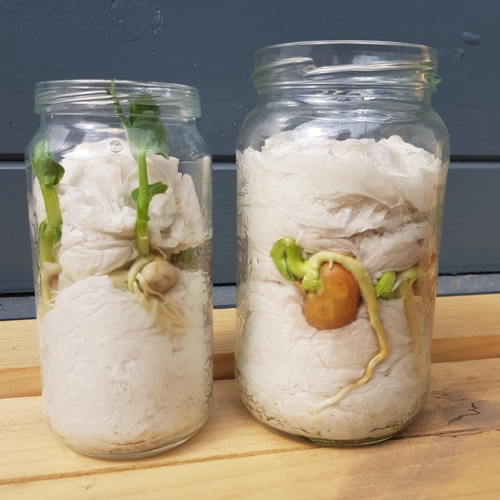
STEAM Science & Technology Activities
This collection of STEAM activities for kids brings together basic science concepts and beginner-friendly technology projects. These hands-on ideas give children opportunities to explore light, circuits, sound, magnetism, and digital tools in simple, fun ways. They’re ideal for early tech exposure, especially for schools looking to introduce STEAM science activities for preschool and elementary students without needing expensive equipment. All these STEAM activities for kids can be done with everyday materials and clear guidance.
DIY Robotic Drawing Arm
Recommended Age: 8–10 години
Students build a simple drawing robot using a plastic cup, markers, motor, and battery. Once powered, the robot vibrates and moves, leaving circular or random patterns on paper. This activity introduces the basics of robotics, vibration motors, and circuits. It also encourages exploration of balance, structure, and motion—all using accessible materials.
Необходими материали:
- Plastic cup or container
- 3–4 markers
- Small vibration motor
- Battery pack
- Лента
Simple Circuit Bracelets (LED + Battery)
Recommended Age: 7–10 years
Children create wearable bracelets that light up using LED bulbs, coin cell batteries, and copper tape or conductive thread. After learning how to connect the positive and negative sides, they test and secure the circuit. This is one of the most accessible steam technology activities for preschoolers and early learners to understand how electricity flows through a complete path. Among all beginner-friendly STEAM activities for kids, this one is especially engaging because it combines creativity with an introduction to electricity.
Необходими материали:
- LED lights
- Coin cell batteries
- Copper tape or conductive thread
- Velcro or felt bracelet base
- Лента или лепило
Augmented Reality Drawing with Tablet
Recommended Age: 8–10 години
In this activity, students draw objects or characters, then scan them using a basic AR app on a tablet. Their drawings appear in a digital 3D space, moving or interacting depending on the software used. This activity connects art and technology, introducing digital imaging and interactive design in a child-friendly way. It’s a good introduction to emerging tech tools and creativity in STEM.
Необходими материали:
- Tablet with AR drawing app
- Хартия за рисуване
- Colored pencils or markers
- Flat scanning surface
Micro:bit LED Patterns
Recommended Age: 9–10 years
Students use a Micro:bit microcontroller to create simple LED light patterns using block-based coding. They connect the board to a computer, choose a light pattern or animate a message, and upload the code. This beginner-level STEAM activity for kids introduces inputs, outputs, and basic logic functions in a fun, visual format. It’s one of the most interactive STEAM activities for kids, especially those curious about programming and tech tools.
Необходими материали:
- Micro:bit board
- USB cable
- Laptop or tablet with coding platform
- Battery pack
Sound-Vibration Painting with Paper Plate
Recommended Age: 6–8 години
Children place drops of watered-down paint on a stretched surface (like a paper plate or cling film) and then apply vibrations using a Bluetooth speaker or music. The sound waves spread the paint in unique ways, creating abstract visuals. It’s a visual way to explore how sound travels through surfaces, mixing both science and creativity. This project adds to the list of sensory-rich STEAM activities for kids that use sound and color in unexpected ways.
Необходими материали:
- Paper plate or cling film surface
- Liquid watercolor or diluted paint
- Bluetooth speaker or tuning fork
- Plastic wrap or stand
- Eye droppers
Magnetic Discovery Tray
Recommended Age: 5–8 years
Students are given a tray filled with different objects—some magnetic, some not—and a magnet wand. They test each item and sort them based on whether they’re attracted to the magnet. This simple STEAM activity for preschoolers teaches magnetic properties, prediction, and classification through hands-on trial and error. It’s one of the most accessible and quick-to-prepare STEAM activities for kids, especially in science corners or preschool classrooms.
Необходими материали:
- Magnet wand
- Assorted objects (paper clips, buttons, coins, plastic)
- Sorting tray or containers
- Worksheet or tally chart (optional)
Light Painting Photography with Long Exposure
Recommended Age: 8–10 години
Children use a camera or phone with long exposure settings in a dark room, then move flashlights or glow sticks to create light trails in the air. The result is captured as colorful lines or shapes on a photo. This activity explores the science of light, motion, and exposure, while also encouraging planning and experimentation in visual storytelling. This is one of the more advanced STEAM activities for kids, offering a fun way to explore light behavior while boosting artistic creativity.
Необходими материали:
- Camera or phone with long exposure mode
- Flashlights, glow sticks, or LED toys
- Tripod or stable phone holder
- Darkened room or box
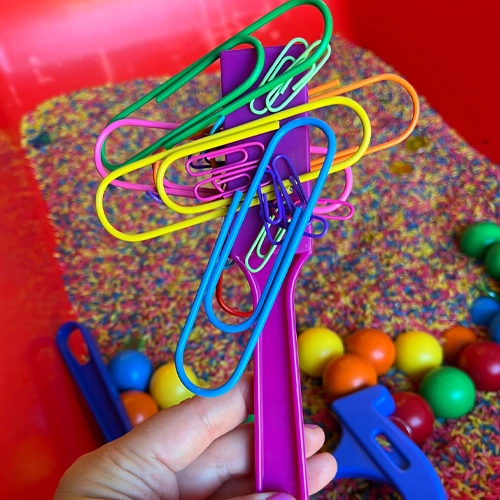
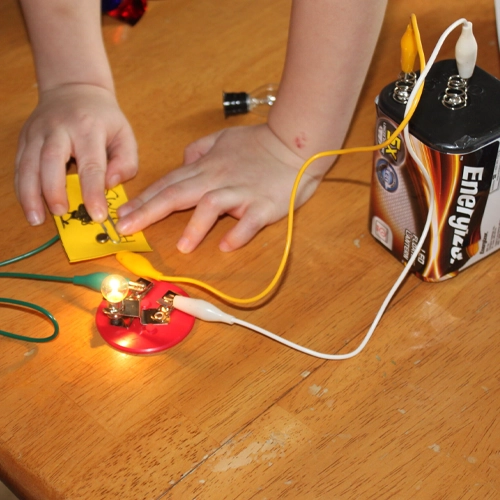
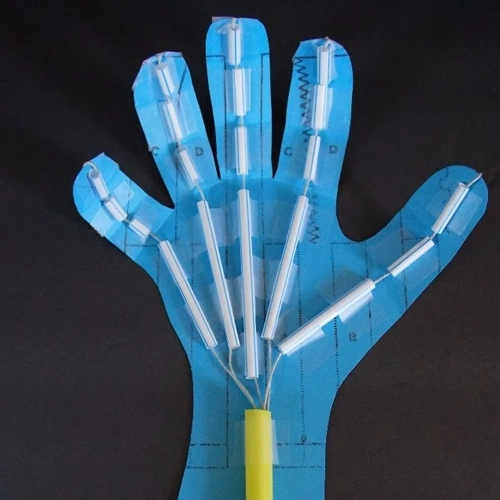
Seasonal or Theme-Based STEAM Activities
These seasonal STEAM activities for kids align with natural changes in weather and holidays throughout the year. Whether using fall leaves, winter snowflakes, spring gardens, or rain-inspired painting, children explore science, math, and technology through hands-on seasonal themes. These ideas are especially useful for preschool and elementary classrooms looking to bring STEAM into seasonal project planning.
Leaf Circuit Art (Fall)
Recommended Age: 6–9 years
Children collect real leaves and incorporate them into a basic LED circuit artwork. By placing a small LED light through the leaf and connecting it with copper tape and a battery, they turn fall materials into working art. This activity blends nature exploration with simple circuitry and is ideal for introducing electricity during autumn-themed lessons. It’s a great example of how STEAM activities for kids can be tied to seasonal topics.
Необходими материали:
- Real leaves (dry and flat)
- Coin cell battery
- Copper tape
- LED bulbs
- Paper or cardboard for mounting
Snowflake Geometry & 3D Sculpture (Winter)
Recommended Age: 7–10 years
Students cut paper snowflakes by folding and cutting along geometric lines. Then, they use toothpicks, marshmallows, or connectors to build 3D snowflake sculptures based on symmetrical patterns. This activity reinforces math skills like symmetry, angles, and shapes while exploring winter themes. It also develops spatial thinking and fine motor skills in a creative setting.
Необходими материали:
- Хартия
- Ножици
- Toothpicks or craft sticks
- Mini marshmallows or modeling clay
- Ruler (optional)
Rain Painting with Outdoor Sprays (Spring)
Recommended Age: 5–8 years
Children place drops of paint on paper and spray them gently with water bottles to simulate raindrops. This spring-themed activity helps children observe how water spreads color and can be tied into a discussion on rain, weather, and the water cycle. It’s one of the more sensory-friendly steam activities for preschoolers that also supports early color theory and process art.
Необходими материали:
- Thick paper
- Washable paint or watercolor
- Spray bottles with water
- Plastic table cover or tray
Garden Layout with Sensors (Spring/Summer)
Recommended Age: 8–10 години
Children design a garden layout using paper models or real outdoor areas, then place simple soil or moisture sensors to simulate how plants might receive care. Using basic coding platforms or mock data sheets, they track changes and adjust garden placement. This is a great way to integrate steam technology activities for kids with environmental science and design thinking.
Необходими материали:
- Soil or moisture sensors (or paper alternatives)
- Garden diagram or paper grid
- Markers, rulers
- Optional: micro:bit, tablet, or sensor app
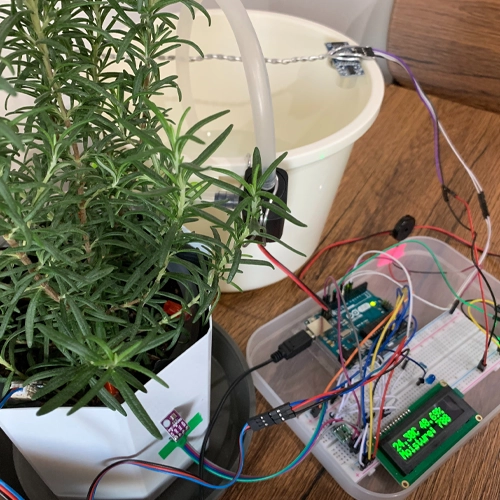
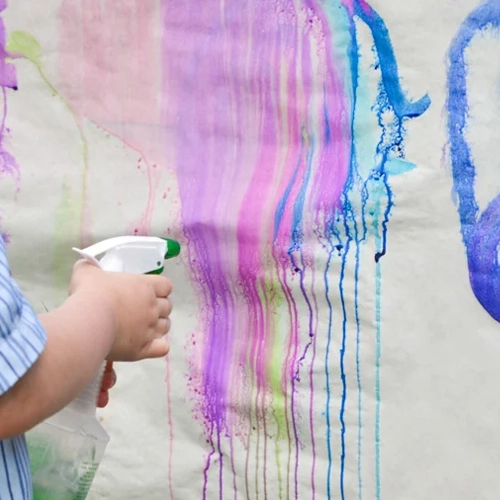
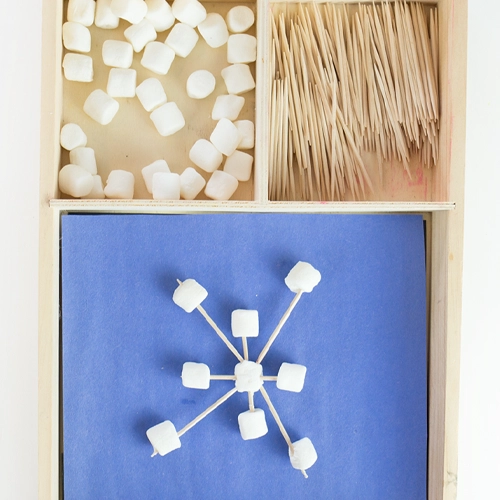
Group & Collaborative STEAM Activities
These STEAM activities for kids are designed to encourage teamwork, communication, and shared problem-solving. When students work in small groups, they learn how to listen, take turns, and build together—skills that are just as important as science and math. These projects support both academic and social development, making them ideal for classrooms and group environments.
Team Tower Build for Siblings/Groups
Recommended Age: 5–9 years
Children work in small teams to build the tallest tower possible using simple materials like cups, sticks, or blocks. The activity focuses on shared planning, communication, and creative problem-solving. Teams must negotiate how to balance height and stability. This collaborative STEAM activity for kids reinforces engineering skills while promoting turn-taking and teamwork.
Необходими материали:
- Plastic cups, craft sticks, or foam blocks
- Timer (optional)
- Ruler or measuring tape
- Table or flat surface
Group Story + Robot Build
Recommended Age: 7–10 years
Children work in groups to create a short story and then design a robot or character to act it out. They sketch ideas, build with recycled or craft materials, and present the result to the class. This activity merges storytelling, engineering, and creativity, while encouraging cooperation and presentation skills. It’s one of the most engaging collaborative STEAM activities for upper-elementary students.
Необходими материали:
- Paper, pencils for story planning
- Recycled materials or craft supplies
- Toy motors or movable parts (optional)
- Presentation space
Community Garden Project
Recommended Age: 6–10 years
Small groups design parts of a classroom or outdoor garden. Each group can be responsible for one area—such as flower beds, vegetable rows, or signs. Students learn about plants, spatial layout, and how tools or water systems might be shared. This group-based STEAM activity for kids ties in science, technology, and environmental awareness.
Необходими материали:
- Garden layout paper or printable template
- Markers, pencils
- Plant images or samples
- Optional: real garden space or raised beds
Mini Roller Track for Toy Cars
Recommended Age: 6–9 years
Children design and build a track system using ramps, tunnels, and turns for small toy cars. Working in teams, they test how the track affects speed or direction and refine their design together. It combines physics (motion, gravity) with hands-on problem-solving and is ideal for open-ended play or challenge-based learning.
Необходими материали:
- Cardboard, foam tubes, or tracks
- Tape, scissors
- Toy cars
- Rulers or stopwatches (optional)
Recycled Materials Game Creation
Recommended Age: 7–10 years
Students form teams to invent a simple game using only recycled materials. They brainstorm rules, build prototypes, and take turns playing each other’s creations. This activity builds creativity, logical thinking, and communication, while also promoting environmental responsibility. It’s one of the best STEAM activities for elementary kids to integrate sustainability and teamwork.
Необходими материали:
- Recyclable items (bottle caps, boxes, paper rolls)
- Markers, paper
- Timer or dice (optional)
- Rule sheet template
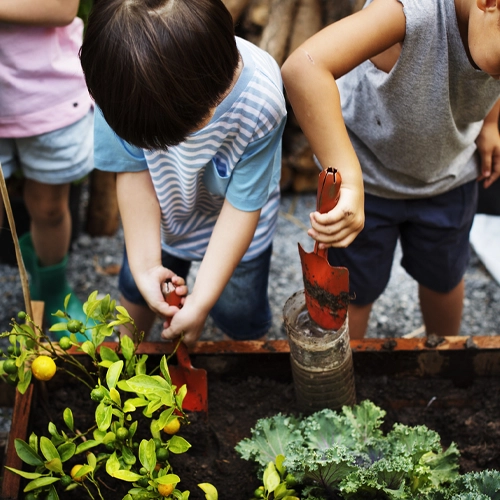
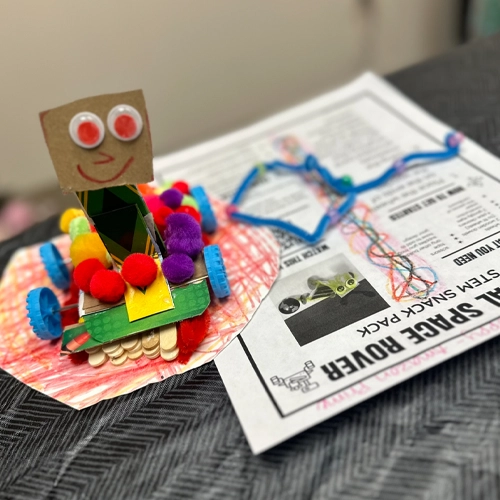
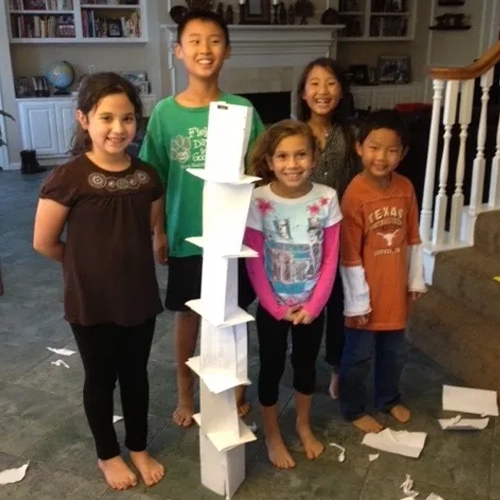
Заключение
STEAM activities for kids are more than just creative projects—they are powerful tools to support hands-on learning, problem-solving, and collaboration. Whether in the classroom, at home, or in community programs, these STEAM activities for kids help children connect science, technology, engineering, arts, and math in meaningful and exciting ways.
The true value of these STEAM activities for kids isn’t in the final product, but in the process itself. Children explore ideas, test solutions, and learn to adapt when things don’t go as planned. This process builds persistence, creativity, and critical thinking—skills they will carry into the future.
We encourage teachers, parents, and caregivers to continue experimenting with different STEAM activities for kids, tailoring each experience to the child’s age, interests, and environment. These activities are flexible, scalable, and most importantly—fun. Every project is an opportunity to inspire curiosity and build real-world skills in young learners.
Често задавани въпроси
How often should I do STEAM activities with kids?
It’s helpful to include STEAM activities for kids at least once or twice a week. Regular exposure helps children build confidence in problem-solving and creativity. Even short sessions can make a lasting impact if they’re consistent and engaging.
Are STEAM activities suitable for toddlers?
While not all STEAM activities for kids are designed for toddlers, many simple options can be adapted for younger children. Look for hands-on, sensory-based activities like color mixing, stacking, or exploring water and magnets. Always focus on safety and exploration over outcomes.
Can I adapt these activities for a group setting?
Yes, most STEAM activities for kids can be easily modified for small groups or classrooms. You can divide tasks among children, encourage collaboration, and provide shared materials. Group STEAM projects also help build teamwork and communication skills.
What if I don’t have special equipment or furniture?
Many STEAM activities for kids use everyday materials like paper, tape, bottle caps, or cardboard. You don’t need high-tech tools or fancy furniture. Creativity and curiosity matter more than equipment. Choose activities based on what you already have.
Do I need a science background to guide these?
Not at all. Most STEAM activities for kids are designed to be guided by parents, teachers, or caregivers with little or no science background. Clear instructions and open-ended exploration are more important than technical knowledge.
How do I keep kids engaged in repeated activities?
Vary the materials, add simple challenges, or allow kids to change roles within a familiar activity. Even repeating the same STEAM activities for kids can offer new experiences when you shift the goal or explore new questions each time.
Which STEAM activities for kids are best for limited indoor space?
Many tabletop activities like shadow drawing, magnetic exploration, or simple circuits work perfectly in small spaces. Choose STEAM activities for kids that don’t require running, water, or large setups

